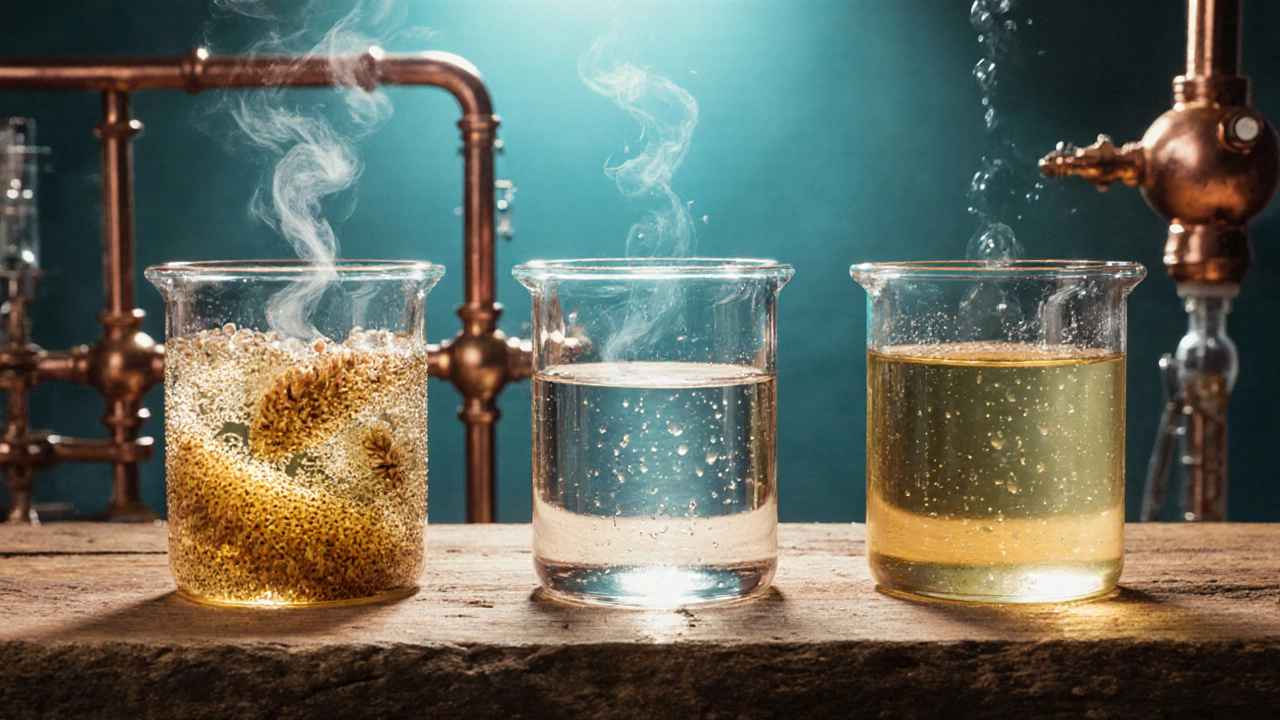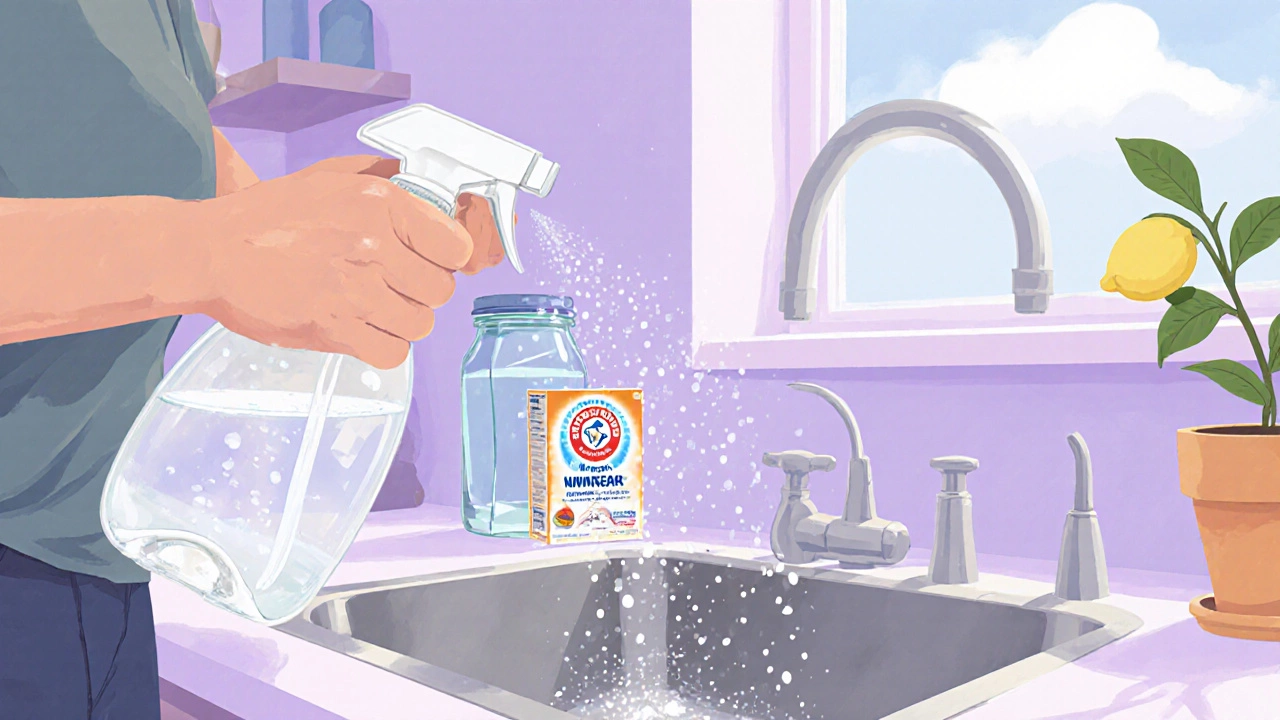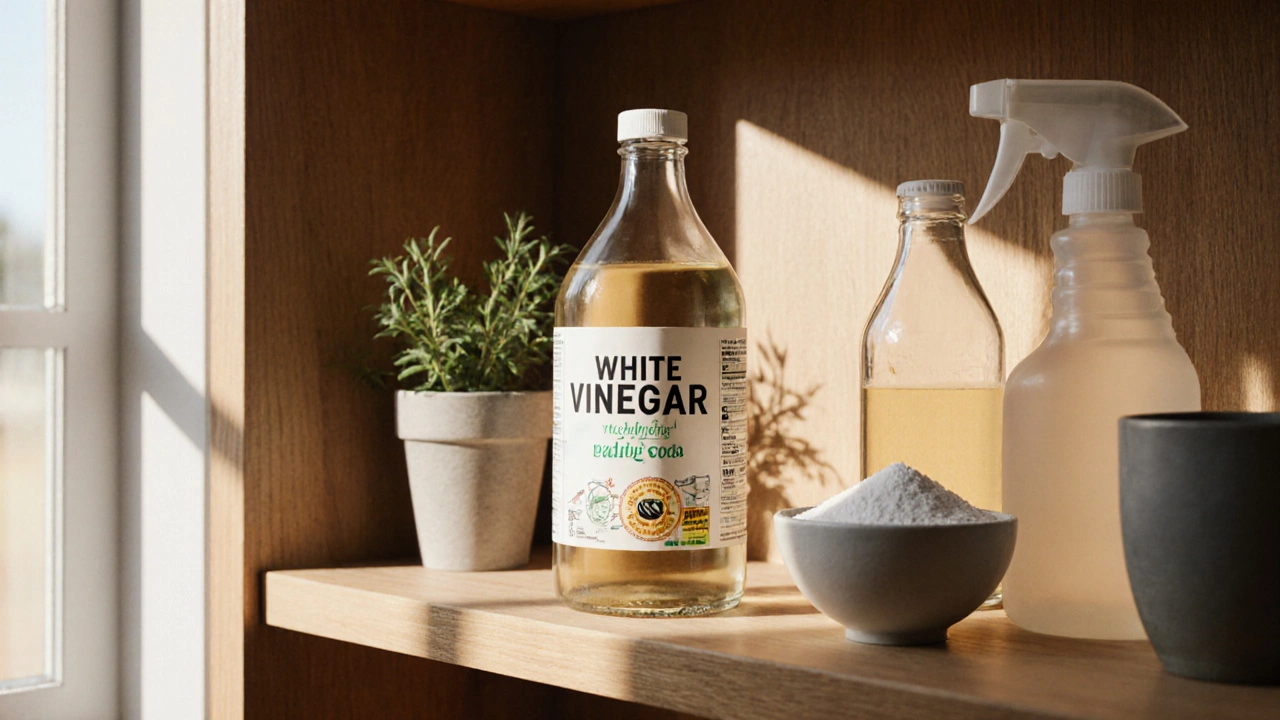Green Cleaning Impact Calculator
Compare the environmental and financial impact of using white vinegar versus commercial cleaning products. Based on data from the article: vinegar has a 0.2 kg CO2/L footprint vs 1.2 kg CO2/L for commercial cleaners.
When you hear the phrase “green cleaning,” White vinegar is often the first name that pops up. It’s cheap, easy to find, and promises a chemical‑free shine. But does it really live up to the eco‑friendly hype? Below we break down the science, the environmental footprint, and the practical pros and cons so you can decide whether to keep that bottle in your pantry.
What Is White Vinegar?
White vinegar is a diluted solution of acetic acid, usually 5‑6% by volume, produced by fermenting grain, corn, or apple mash. The fermentation process first creates ethanol, which bacteria then convert into acetic acid. The resulting liquid is clear, acidic, and shelf‑stable. Because it contains no added fragrances or colourants, it’s often called “distilled” or “cleaning” vinegar.
How Does It Work as a Cleaner?
The acidic pH (around 2.4‑3) helps break down mineral deposits, grease, and soap scum. Acidity also disrupts the cell walls of many bacteria, giving it mild antibacterial properties. When mixed with water (typically 1:1 for most surfaces), it can dissolve grime without leaving residue.
- Degreaser: The acid emulsifies oily films on stovetops and countertops.
- Descaler: It dissolves calcium carbonate in kettles, coffee makers, and showerheads.
- Deodorizer: Neutralises alkaline odor molecules by shifting pH.
- Disinfectant: Reduces surface bacteria by up to 99% when left wet for a few minutes.
Environmental Impact Overview
To judge eco‑friendliness we look at three main factors: production emissions, biodegradability, and packaging.
- Carbon Footprint: The fermentation of grain into ethanol, then into acetic acid, emits roughly 0.2 kg CO₂ per litre of vinegar (source: UK Food‑Chain Research Institute, 2024). That’s far lower than the 1‑2 kg CO₂ associated with manufacturing a litre of conventional liquid detergent.
- Biodegradability: Acetic acid breaks down completely in water within hours; the final by‑product is simply carbon dioxide and water, both harmless to aquatic life.
- Packaging: Most white vinegar is sold in recyclable glass or HDPE plastic bottles. Glass can be reused indefinitely, while HDPE has a recycling rate of about 65% in the UK (Recycle Now, 2023). By contrast, many commercial cleaners are packaged in multi‑layered plastics that are harder to recycle.

Comparing to Conventional Cleaners
Below is a quick side‑by‑side look at white vinegar versus a typical store‑bought all‑purpose cleaner and a citrus‑based eco‑cleaner.
| Attribute | White Vinegar | Typical Commercial Cleaner | Citrus Eco‑Cleaner |
|---|---|---|---|
| Active ingredient | Acetic acid (5‑6%) | Non‑ionic surfactants, fragrance, preservatives | d‑Limonene, plant‑based surfactants |
| pH level | 2.4‑3 (acidic) | 7‑9 (neutral to alkaline) | 6‑7 (slightly acidic) |
| Biodegradability | Fully biodegradable within hours | Partial; some surfactants persist weeks | High, but depends on additives |
| Carbon footprint (kg CO₂/L) | 0.2 | 1.2 | 0.6 |
| Cost (USD per litre) | 0.60 | 3‑5 | 4‑6 |
White vinegar wins on cost, carbon emissions, and biodegradability, but it can struggle with heavy‑duty grease or protein stains where stronger surfactants shine.
Best Practices for Eco‑Friendly Use
To maximise both cleaning power and sustainability, follow these tips:
- Mix 1 part vinegar with 1 part water for most surfaces; use full strength for mineral deposits.
- Combine with baking soda for a fizzing reaction that helps lift stubborn grime (e.g., clogged drains).
- Store the solution in a reusable glass spray bottle; label it to avoid confusion with food‑grade vinegar.
- Test on a hidden area first-acidic solutions can etch natural stone such as marble or limestone.
- Avoid mixing with bleach; the reaction creates toxic chlorine gas.

Potential Drawbacks & Safety Tips
While white vinegar is generally safe, it isn’t a universal miracle worker.
- Material Compatibility: Acid can dull finishes on hardwood, damage waxed surfaces, or corrode copper.
- Odour: The sharp scent can be off‑putting for some; ventilate the area or add a few drops of essential oil after cleaning.
- Limited Disinfectant Power: It doesn’t kill spores or viruses like hospital‑grade disinfectants. For high‑risk areas (e.g., bathrooms during flu season), pair with a proven sanitizer.
Quick Reference Checklist
- ✔️ Is the surface acid‑resistant? (glass, tile, stainless steel - yes.)
- ✔️ Do you need a strong degreaser? (Consider a plant‑based surfactant for heavy grease.)
- ✔️ Is the packaging recyclable or reusable?
- ✔️ Have you ventilated the area to clear the vinegar smell?
Frequently Asked Questions
Is white vinegar safe for pets?
Yes, when diluted it’s non‑toxic to dogs and cats. Avoid letting them lick wet surfaces before they dry, and keep bottles out of reach.
Can I use apple cider vinegar instead?
Apple cider vinegar works similarly, but its brown colour can stain light surfaces. Stick with clear white vinegar for most cleaning tasks.
How long does the cleaning solution remain effective?
If stored in a sealed container away from direct sunlight, the acidity stays stable for at least a year. Over time the acetic acid can evaporate, reducing strength.
Does vinegar damage plumbing?
In normal concentrations (5‑6%), vinegar is safe for most metal and PVC pipes. However, prolonged use on older galvanized steel can accelerate corrosion.
What’s the best way to remove hard water stains?
Apply full‑strength white vinegar to the stain, let it sit 10‑15 minutes, then scrub with a soft brush. Rinse well to avoid lingering acidity.
